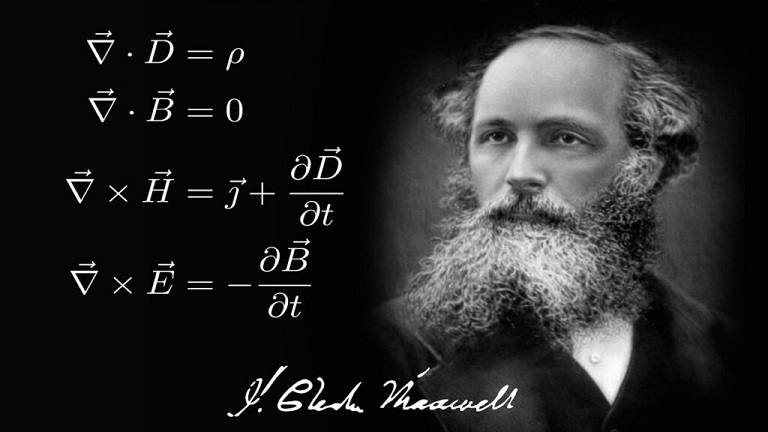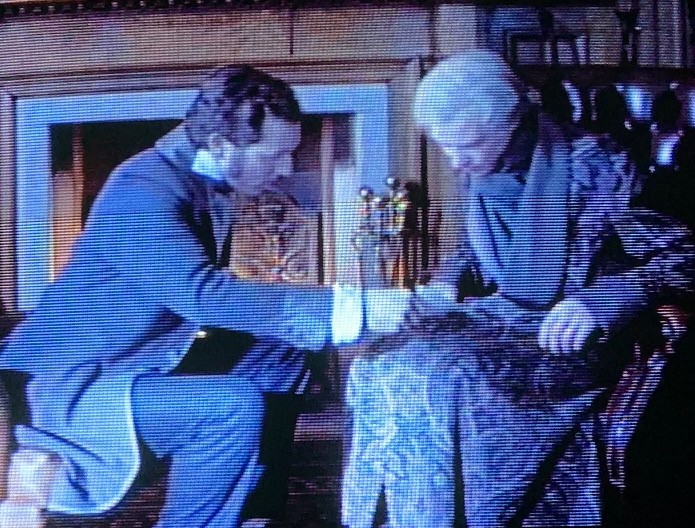|
home | what's new | other sites | contact | about |
||
|
Word Gems exploring self-realization, sacred personhood, and full humanity
Quantum Mechanics
return to "Quantum Mechanics" main-page
James Clerk Maxwell (1831 - 1879)
Wikipedia: James Clerk Maxwell FRSE FRS (13 June 1831 – 5 November 1879) was a Scottish mathematician and scientist responsible for the classical theory of electromagnetic radiation, which was the first theory to describe electricity, magnetism and light as different manifestations of the same phenomenon. Maxwell's equations for electromagnetism have been called the "second great unification in physics" where the first one had been realised by Isaac Newton. With the publication of "A Dynamical Theory of the Electromagnetic Field" in 1865, Maxwell demonstrated that electric and magnetic fields travel through space as waves moving at the speed of light. He proposed that light is an undulation in the same medium that is the cause of electric and magnetic phenomena. The unification of light and electrical phenomena led his prediction of the existence of radio waves. Maxwell is also regarded as a founder of the modern field of electrical engineering. He helped develop the Maxwell–Boltzmann distribution, a statistical means of describing aspects of the kinetic theory of gases. He is also known for presenting the first durable colour photograph in 1861 and for his foundational work on analysing the rigidity of rod-and-joint frameworks (trusses) like those in many bridges. His discoveries helped usher in the era of modern physics, laying the foundation for such fields as special relativity and quantum mechanics. Many physicists regard Maxwell as the 19th-century scientist having the greatest influence on 20th-century physics. His contributions to the science are considered by many to be of the same magnitude as those of Isaac Newton and Albert Einstein. In the millennium poll—a survey of the 100 most prominent physicists—Maxwell was voted the third greatest physicist of all time, behind only Newton and Einstein. On the centenary of Maxwell's birthday, Einstein described Maxwell's work as the "most profound and the most fruitful that physics has experienced since the time of Newton". Einstein, when he visited the University of Cambridge in 1922, was told by his host that he had done great things because he stood on Newton's shoulders; Einstein replied: "No I don't. I stand on the shoulders of Maxwell."
Editor's note: The following is reprinted from the article on "Einstein":
Michael Faraday at the Royal Society While the speed of light had been roughly determined by 1846, no one knew what light actually was. In that year, Michael Faraday – by then, Professor Faraday at the Royal Society – lectured that electricity and magnetism were aspects of the same underlying phenomenon; further, light is an expression of this electro-magnetic field of energy. This was a new and radical idea, and not well received. Despite Faraday’s monumental contributions to science, skeptics derided his latest finding. Faraday’s problem was that he lacked the math skills to prove his theory. you can't fight the science skeptics without math Editor's note: On this field of battle, the maths front, the Darwinian concept of randomness and chance falls to pieces. See on the "Evolution" page. However, by the early 1860s, Faraday found an ally in James Clark Maxwell. This Scottish scientist did possess the mathematical ability to offer substance to Faraday’s assertions. Maxwell’s equations have become famous as they summarize the classical properties of the electromagnetic field. Before Faraday’s death in 1867, Maxwell travelled to London to meet with his very aged and frail friend. This meeting is depicted in the documentary, “Einstein’s Big Idea” (2005).
Maxwell shows Faraday a recently-published paper which would put the elder scientist’s ideas on the map: Maxwell: “When electricity flows along a wire, it creates a little bit of magnetism, and when that magnetic charge moves, it creates a little piece of electricity. Electricity and magnetism are interwoven, like a never-ending braid. It’s always pulsing forward. Faraday: “It’s wonderful.” Maxwell: “Michael, there’s something very crucial in the maths. This electricity producing magnetism, and magnetism producing electricity, can only happen at a very particular speed. The equations are very clear about it. They come up with just one number: [186,000 miles per second]." Faraday: “I’m not sure I …” Maxwell: “It’s the speed of light! This means you were right all along, Michael! Light’s an electromagnetic wave!” Maxwell had proven Faraday correct. Light is an electromagnetic wave. Light is an expression, a vibrating form, of an underlying substrata of reality, a marriage between electricity and magnetism.
a brief discussion of the famous four Maxwell equations
Physical Meanings of Maxwell's EquationsMaxwell's Equations are composed of four equations with each one describes one phenomenon respectively. Maxwell didn't invent all these equations, but rather he combined the four equations made by Gauss (also Coulomb), Faraday, and Ampere. But Maxwell added one piece of information into Ampere's law (the 4th equation) - Displacement Current, which makes the equation complete.
The combination of equations 3 and 4 can explain electromagnetic wave (such as light) which can propagate on its own. The combination says that a changing magnetic field produces a changing electric field, and this changing electric field produces another changing magnetic field. Thus the cycle continues and an electromagnetic wave is made and propagates through the space...
|
||
|
|

